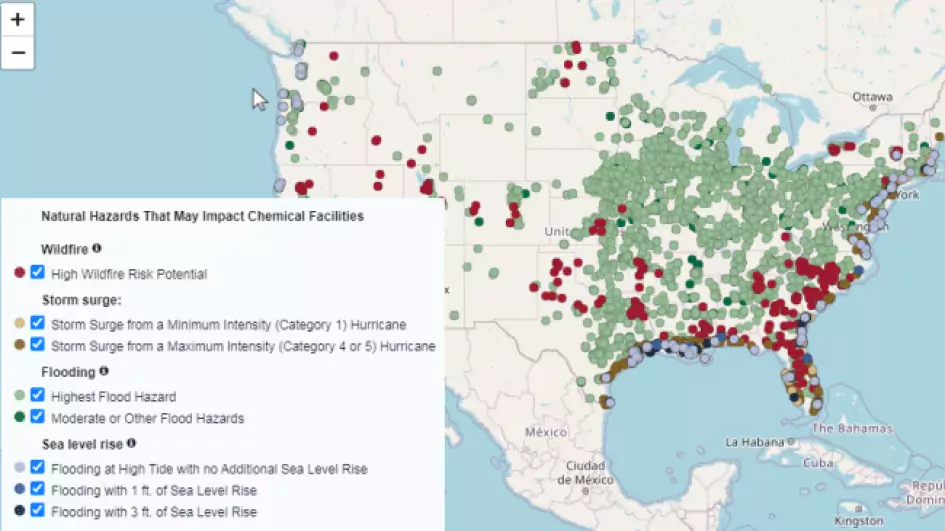Is Climate Change Impacting the Safety of Chemical Facilities? (interactive map)
Across the nation, the federal government regulates approximately 11,000 facilities that make, use, or store extremely hazardous chemicals in amounts that could harm the public if accidentally released. The Environmental Protection Agency (EPA) requires these facilities to develop a risk management plan to prevent or minimize the consequences of an accidental release.
Climate change may increase the frequency and intensity of certain natural hazards, putting these facilities at greater risk of damage and releasing chemicals into surrounding communities. According to federal data, approximately 31% of the facilities we analyzed (3,219 of 10,420) are located in areas impacted by some natural hazards, such as wildfires and flooding.
Want to find out if any of these facilities are close to where you live or work? Check out our interactive map for details on these facilities and whether they are in areas with known natural hazards, such as flood zones. To learn more about these facilities and their risk management plans, visit the full report page.
Interactive Map: EPA Regulated Chemical Facilities That May Be Affected by Flooding, Storm Surge, Wildfire, or Sea Level Rise
Image

- Comments on GAO’s WatchBlog? Contact blog@gao.gov
GAO Contacts
Related Products

GAO's mission is to provide Congress with fact-based, nonpartisan information that can help improve federal government performance and ensure accountability for the benefit of the American people. GAO launched its WatchBlog in January, 2014, as part of its continuing effort to reach its audiences—Congress and the American people—where they are currently looking for information.
The blog format allows GAO to provide a little more context about its work than it can offer on its other social media platforms. Posts will tie GAO work to current events and the news; show how GAO’s work is affecting agencies or legislation; highlight reports, testimonies, and issue areas where GAO does work; and provide information about GAO itself, among other things.
Please send any feedback on GAO's WatchBlog to blog@gao.gov.



